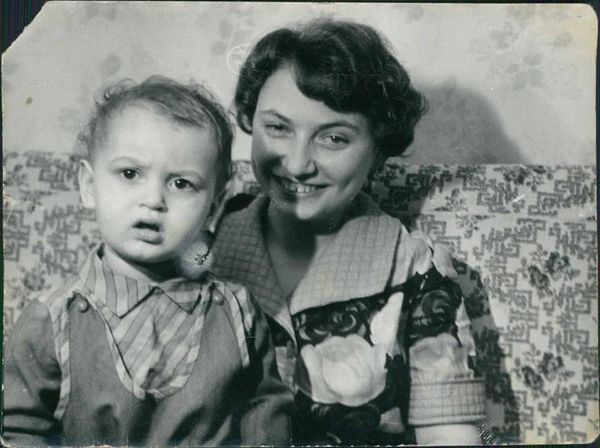Colorblindness runs in my family. My late aunt Vera saw green, gray and brown as one color.
As a child, I spent hours examining her inability to distinguish between these three colors. I just couldn’t fathom how she was not able to distinguish between such distinct tones.
Since colorblindness is genetic, I have a particular appreciation for my ability to see the world through the prism of all colors, tones and shades.
As a child, I remember trying to explain to my aunt my experiences of these three colors. “Grass in the summer is green, and my school uniform is brown. Gray is everywhere around us: apartment buildings, unpaved roads and sky on a cloudy winter day,” I would explain.
I was concerned that Vera was not able to fully comprehend what I was so clearly seeing all around us. My dear aunt kept reassuring me that her condition didn’t make her feel that her perception of reality was lacking in any way. Yet deep inside, I knew that it wasn’t true. How could a person who never knew the feeling of looking up at the sky to see its shade before the rain know what they were missing? Or how could one truly appreciate the lushness of greens in the summer forest?
Many years later, when I connected to my Jewish heritage, I learned about the saddest day of the Jewish year, Tisha B’Av. This day marks the destruction of both the First and the Second Temples in Jerusalem, along with other catastrophic events in the history of Jewish people.
Every year on this date, we are instructed to mourn the loss by fasting, and abstaining from intimacy, bathing, applying ointments and wearing leather shoes. We also sit on the floor or a low stool to internalize the tragedy that befell the Jewish people when the Holy Temples were destroyed and we were sent into exile.
The first time I joined my congregation for the evening Tisha B’Av service was almost two decades ago. I remember sitting on the floor in the synagogue along with other women, reading the book of Lamentations, Eichah, reliving the events that preceded the destruction. The lights were dimmed, and I tried desperately to connect to the energy of the day. Yet as I quietly read the words of the famous prophet, Jeremiah, who so vividly described the unfathomable tragedy of his time, I just couldn’t relate to the loss. Men were solemnly singing, and I struggled to understand the pain behind this experience.
Year after year, I fasted, read Eichah, sat on the floor and felt incredibly disappointed with my inability to truly comprehend the profound sadness of the day. Last year, in March of 2021, my beloved aunt Vera passed away from COVID-19. After the seven-day shivah mourning period, my family walked through her apartment.
As we were going through her personal belongings, I came across many notes and stickers attached to her clothes and jewelry. They were helpful hints to help her navigate her colorblindness. These stickers identified colors: “green” “brown,” “gray.”
These were her written reminders of the reality that she couldn’t possibly comprehend.
After Vera’s passing, as I was sitting on the floor in the somber, dim light of the Tisha B’Av August evening, I finally understood what this day was about. Perhaps we were not just mourning the actual physical destruction of both Temples, but also our inability to imagine the world before this tragedy. I saw the words of the prophet as his “notes and labels” to the future generations, pointing us to the magnitude and all the “colors” of our loss.
For most of us, it is challenging to envision the world in which “the glory of G‑d will be revealed, and all flesh will see as one that the mouth of G‑d has spoken” (Isaiah 40:5).
Thousands of years in exile created a colorblindness to the G‑dly reality of the world. As we mourn the tragedies that befall the Jewish people throughout the millennium, we can feel the deep and profound sadness about our inability to see “true colors” and palpably feel G‑d’s presence in our lives.
Still, Tisha B’Av isn’t just a day of mourning; it’s also a day of rectification and opportunity. Our reflection over loss and lacking provides us with the opportunity to create a world that will be a place of revealed goodness, spirituality and G‑dliness. A place where G‑d is truly at home.
Colorblindness and the Tragedy of Tisha B’Av – The Month of Av (chabad.org)

